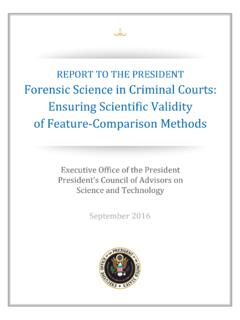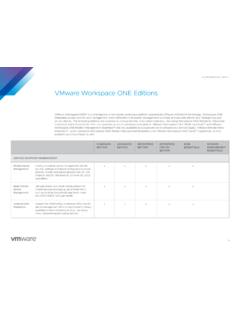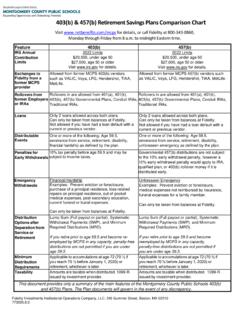Transcription of A Forensic Comparison of NTFS and FAT32 File Systems
1 MARSHALL UNIVERSITY Forensic SCIENCE CENTER & FBI, HEART OF AMERICA REGIONAL COMPUTER FORENSICS LABORATORY A Forensic Comparison of ntfs and FAT32 File Systems Summer 2012 Kelsey Laine Rusbarsky #901-60-8173 FSC 630 Forensic Science Internship MU Topic Advisor: Dr. Fenger Internship Agency Supervisor (SSA Lou Ann Stovall, FBI KC Division, Director HARCFL, 816-584-6614 (office), Internship Agency (HARCFL, 4150 N. Mulberry Drive, Suite 250, Kansas City, MO 64116-1696, (816)584-4348 (fax)) Inclusive Dates: June 4th, 2012- August 10th, 2012 August 10th, 2012 ABSTRACT The file system on any storage device is essential to the overall organization, storage mechanisms, and data control of the device.)
2 Knowing how these file Systems work and the layout of key structures, storage mechanisms, associated metadata, and file system characteristics is essential to being able to forensically investigate a computer or other device. The New Technology File System ( ntfs ) and File Allocation Table ( FAT32 ) are two key file Systems that will be compared and contrasted, since both are still actively used and encountered often. Both Systems offer Forensic evidence that is significant and mandatory in an investigation. Rusbarsky Page 2 of 29 INTRODUCTION The file system on any digital storage device is essential to the overall organization, storage mechanisms, and data control of the device.
3 File Systems allow computers and other similar digital devices to situate their data in different hierarchal structures through files and directories. Different file Systems conduct these processes differently, and most often the file system can be utilized on multiple computers platforms. Even though a file system is usually not unique to a specific computer, a specific file system will have optimal functionality for certain computers and operating Systems . Other types of storage devices that utilize file Systems include; flash memory such as thumb drives, optical disks such as CD's and DVD's, floppy disks, and hard disk drives.
4 A file system can be thought of as an index in a book, where the book can be broken down into sections and chapters. Without this breakdown of sections and chapters in a book, it would be nearly impossible to find the information that is stored. The same principle lies in the importance of file Systems on a computer or storage To expand on the book analogy, just as books can divide into sections and chapters, so can the file system be organized into data categories. There are five main existing categories which are file system, content, metadata, file name, and application. Generally, the five categories are able to be applied to a majority of the file Systems , though this model must be applied loosely to the FAT file system.
5 The file system category can tell you where data structures are and how big the data structures are. This is the general information of the file system. The content category has the data that describes the actual content of the file and generally contains the majority of the file data. The content category is divided into virtual containers, which are usually the clusters or blocks of a hard drive. The metadata category describes and holds the, in layman s terms, data Rusbarsky Page 3 of 29 about data . In other words, the metadata is the data that describes the file data. The location, size, time and date stamps, and access control is all recorded in the metadata category.
6 The file name category is responsible for giving a name to each file. The file name acts as an address for the file. Rather than the user having to remember the address for the file, the file name takes the place of the numbered code, just as a social security number numerically represents a person s name. Finally, the last category is the application category. The application category is not necessary for the organization or reading and writing of the files, but it is solely responsible for the special features in a file. An example of a special feature would be user quota statistics.
7 Often the application category is not even utilized; this is the case for the FAT file All of the components of these file Systems have the potential to provide Forensic evidence in an investigation. Some of the characteristics are helpful to an investigation and some can hinder the investigation due to their properties or method of operation. Digital evidence submitted into court will need all of the metadata possible to support or deny a claim. For instance, metadata can identify whether an action was human or computer and determine whether something was a mistake, misunderstanding, or on purpose.
8 Metadata can be used to investigate fraud, abuse, and system failures. It can also help establish elements such as causation, timing, extent of knowledge or mens rea, which means guilty mind. Metadata can reveal information about the creation, authorship, history, and intent of documents and The focus of this research is to differentiate and compare two file Systems : ntfs (New Technology File System) a nd FAT (File Allocation Table), in seven areas. The seven areas are key structures, storage mechanisms, file names, directories, file date and time, file deletion, Rusbarsky Page 4 of 29 encryption.
9 The Forensic implications of those areas will be discussed after each section. FTK Imager, a Forensic extraction tool, will be utilized to give a visual of these differences between the file Systems . By understanding the differences between these two file Systems , it will be much easier to navigate and its use a Forensic tool will be elevated. ntfs is a relatively newer file system, beginning with Windows NT and 2000, and has brought in many new features, including better metadata support and advanced data Some added features to ntfs are larger file size, large volume size, last accessed times for files, data access and organization FAT Systems were originally used in DOS and Windows versions prior to windows XP.
10 The 32 in FAT refers to the 32-bit numbers that represent the cluster values, which means that the table entry can have a maximum value of 232 values. Even though the FAT operating system is not utilized in many newer hard drives, it is still often used as a default file system in removable media and storage devices, as well as computers with multiple operating Systems . FAT is good for these types of media because it is a very ubiquitous and versatile file system. FAT can also be easily joined with random operating Systems , which is why the file system is simplistic when compared to ntfs .





